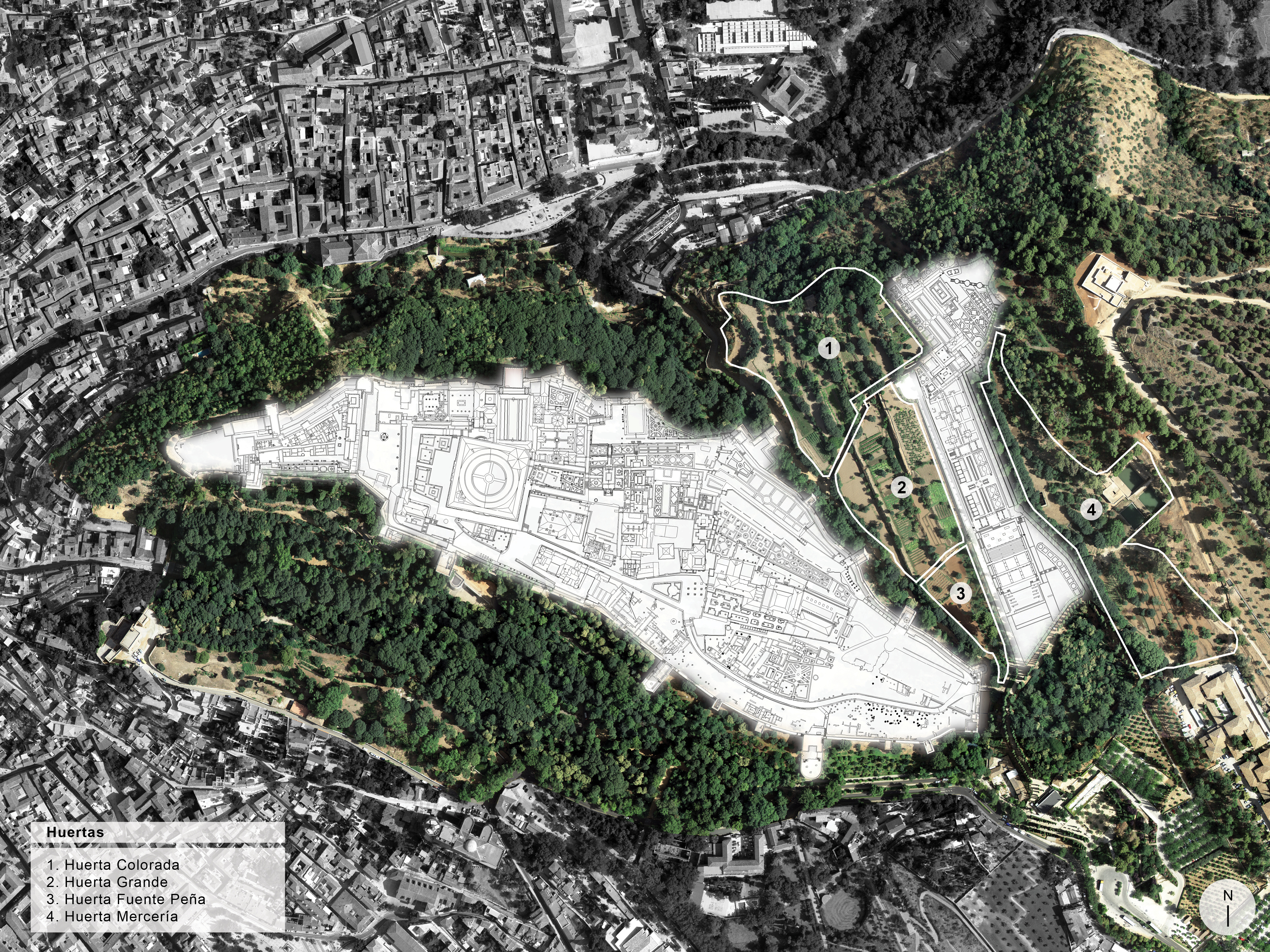Forests
They are mainly divided between four different units: El Bosque de La Alhambra or San Pedro, La Alameda de la Alhambra or Gomérez, La Umbría del Generalife and La Dehesa del Generalife.
El Bosque de la Alhambra, also known as the forest of San Pedro, is a cultivated planting located on the north slope of the walled complex of the Alhambra. It is an enclosed, shady forest, fully paralleled by a garden wall and by the north wall of the Alhambra. Its origin seems to date back to the medieval period. According to Pérez de Hita, this forest was created to accommodate a hunting ground intended for the use and enjoyment of the Sultan Muley Hazen.
Its use for hunting would last until the start of the 17 th century, as attested by numerous quotes.
La Alameda de la Alhambra, also known as the forest of Gomérez, is a poplar grove whose origin dates back to the period of Carlos V (16 th century). These woodland walks were created to form the new accesses to the palace.
Successive transformations in following centuries would connect these walkways and complete the interior groves, resulting in the form we know today.
The large trees, along with the numerous adornments (waterfalls, fountains, channels, sculptures, crosses, etc.) make this space an ideal place for public use.
La Umbría del Generalife is a wooded slope located between the Generalife and the river Darro. It is a very steep, wet area, adjacent to the vegetable gardens of the Generalife. Today, this shaded area is occupied by a Mediterranean forest which plays an essential role in controlling erosion. It is without doubt the wooded area of the monument which has been operated on the least.
La Dehesa del Generalife is a set of lands adjacent to the Monumental Complex, a former hunting area for sultans, and currently populated by areas of meadows and scrubland, reforested pine trees and olive trees. La Dehesa del Generalife, declared a Periurban Park since 1995, has an area of 486 hectares.





 Contact
Contact


















